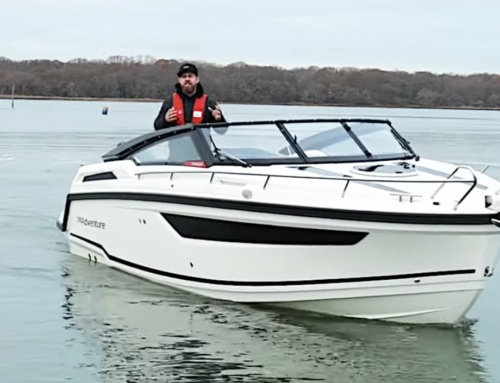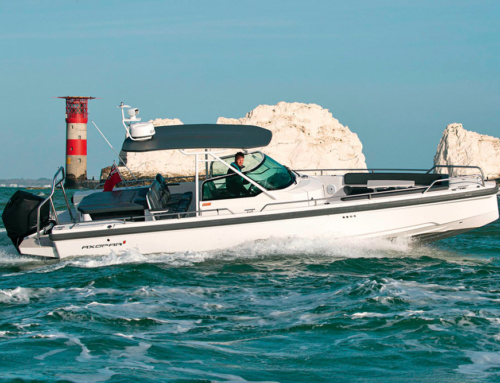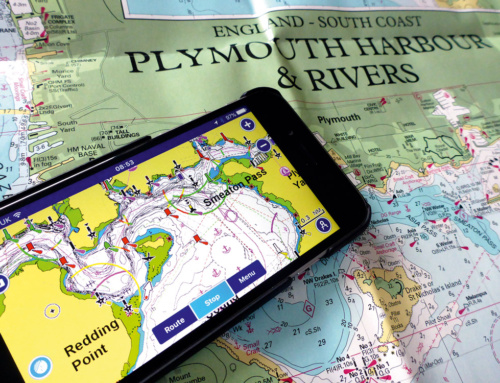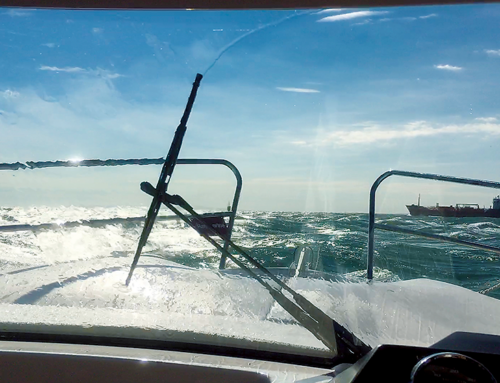With the onset of the new season and adventure planning firmly underway for many, Paul Glatzel focuses on some of the key things to remember when considering boating abroad …
For the last couple of years, for most of us, the chance to go boating in the Med or elsewhere abroad has been a dim and distant dream. With life almost back to normal, though, things are looking up, holidays have been, or will soon be, booked, and that Mediterranean (or further afield) dream beckons. So if you are thinking of going abroad this year and doing some boating, what do you need to get sorted to make it an unforgettable summer?
What you need to do in part depends on what sort of boating you plan on doing. In years gone by, people often towed their boats to the Med, and this is still an option for many; some may keep a boat at a holiday home, while for others, the easiest way is to either charter a boat when out there or join a boat club.
Whatever your plan, let’s start with what you need in terms of qualifications. While in the UK, we don’t need any qualifications to helm a craft under 24m, but in most other countries you do. For example, in France you can hire a boat with 6hp or less sans licence, but for anything over 6hp you need to be able to show a certificate.
But does anyone ever ask to see the certificate? Am I just wasting money getting one? I’m often asked this, and the reality is that hire companies have certainly always asked to see my certificate (maybe they know something!), and I’ve been stopped a few times by the police afloat and asked for a certificate too.
In some jurisdictions, giving boaters a fine can be a significant way to raise revenue, so my advice is to definitely sort out a certificate. The way to prove your competence and be able to show the authorities a certificate is to obtain the International Certificate of Competence (ICC). There are two ‘sizes’ of ICC – sub-10m and sub-24m. For most people, the sub-10m ICC is all that is needed as most of the boats available for self-drive hire are under 10m. The easiest way to get an ICC is simply to undertake and pass the RYA Powerboat Level 2 course, then follow the online process on the RYA website to obtain the ICC. You will need to prove identity, pay a fee of about £50 (or be an RYA member – about £50!), and if you need it quickly (2–3 days), pay an additional £50–100.
If you want the ICC for up to 24m, you will need to take the RYA Day Skipper (Motor) practical course or an ICC test on a motor cruiser. This can be quite a bit more expensive, and unless you know that you need the 24m version, sorting the 10m certificate is far easier.

Depending on where you are heading, you may also need your VHF certificate. Those going to Croatia certainly get asked for it (check out the RYA website for more detailed information: rya.org.uk/knowledge/abroad).
In terms of hiring a boat, it’s worth doing your research before you arrive and perhaps posting some requests on Facebook groups for recommendations. Also, check out the boat clubs as you may find that some of the clubs with facilities in more than one country offer a great chance to get afloat.
Keeping a boat abroad or trailing it there remains an option too, but inevitably Brexit may throw the odd spanner in the works, so make sure you check and double-check what you need to take, including the required paperwork. Again, the RYA website is a haven of useful information.
When I first boated in the Med there was little chance of getting a chart to have a look at, and it was very much ‘turn up and go for it’. The joys of apps like Navionics make life so much easier, and actually far more fun too. Download the local charts onto your tablet or phone and start to think about where you want to go, what bays to anchor in, what the local hazards are and so on. Checking out Navionics may also influence who you hire a boat through, as not all companies will let you travel along a coast, so get a plan together and then look for hire companies that operate where you want.
One thing that you will find a bit different in the Med is the whole ‘Med-style mooring’ approach to berthing, particularly if you are used to the UK approach with finger berths. Basically, the idea is that in order to squeeze in as many boats as possible, boats moor bow or stern to the pontoon and you exit over the bow or stern. This sounds OK, and it is if you have a reasonable-size motor cruisier with a passerelle (like an electric gang plank), but if you have a smaller boat, the gap between the pontoon or concrete dock and the boat can make it a bit tricky.
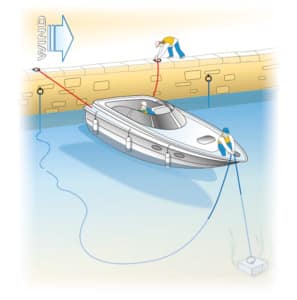 To moor stern to, make sure you fender up both sides with the fenders pretty high. Approach the berth, being really careful not to snag your prop on the numerous lines from other boats’ bows. Turn the boat and ease the stern into the gap. Inevitably, the space will be smaller than your boat, so nuzzle your stern in and make sure the fenders are doing their job. Ease back in slowly until you can reach the stern lines on the dock. Secure these to your aft cleats reasonably loosely.
To moor stern to, make sure you fender up both sides with the fenders pretty high. Approach the berth, being really careful not to snag your prop on the numerous lines from other boats’ bows. Turn the boat and ease the stern into the gap. Inevitably, the space will be smaller than your boat, so nuzzle your stern in and make sure the fenders are doing their job. Ease back in slowly until you can reach the stern lines on the dock. Secure these to your aft cleats reasonably loosely.
On the dock you will find a thinner (generally pretty grotty) line called a ‘lazy line’. Lift this and walk it forward (gloves can be a good idea) towards the bow. This line is attached to a heavy weight beyond the bow and you basically tug on it to pull the boat forward to where you want the bow to sit. Then reset the stern lines and you will sit clearly off the dock. Job done – aside from the little matter of getting off! The trick here is to put your youngest, fittest person on this last bit!
Boating abroad is enormous fun and it’s well worth hiring a boat whenever you can as it’s a great way to see a place. Like any boating trip, though, plan well and prioritise your and others’ safety.
Have a safe and enjoyable time afloat!



